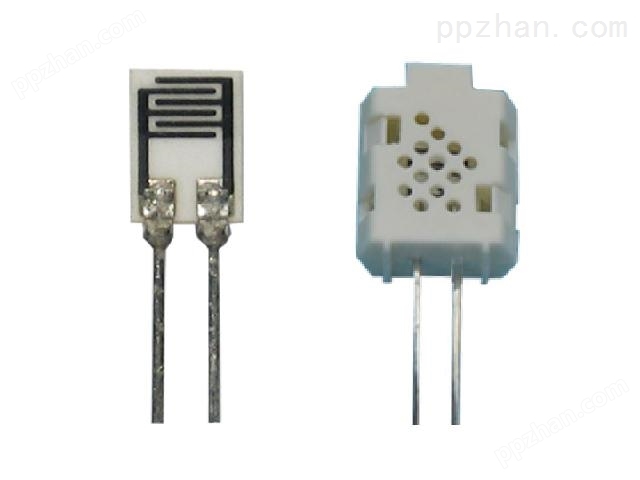Humidity sensor SJL31SY
产品简介
详细信息
1.Applications
This specifications is applied to relative humidity sensor Type SJL31SY.
Guaranteed impedance 31kΩ at 25℃,60%RH
2.Ratings & electronic characteristics
Supply voltage: Less than AC5.0V AC1.0V is recommended.
Test wave shape: Sine or square wave shape. With frequency 500~2,000Hz ,1kHz is recommended.
Power consumption: Less than 2mW
Humidity range: 20-95%RH(in operation) 10-95%RH(in storage)
Temperature range: 0-50℃(in operation) -20-70℃(in storage)
Hysteresis: <2%RH
Response time
moisture absorption time : <15S
moisture doffing time : <20S
Stability : <2%RH Per year
Interchangable characteristics: (-3%RH~3%RH)
Water tolerent: <3%RH accuracy variation when dipping into water for 30minute, widely used in dewing occasions.
Typical humidity sensor Characteristics: See following table 1
3.Outline Dimensions (Unit:mm)
4.Typical humidity sensor Characteristics(table 1)
5.Packing
(1) 100PCS of sensor are placed in a tray
(2) 20sheets to be packed in a small carton box(SIZE:L190*W150*H55mm)
(2,000PCS of sensor in a unit box)
(3) 16 small boxes to be packed in larager box(SIZE:L340*W390*H240mm)
(32,000PCS of sensor in a lager box)
6.Mechanical durability
Drop test (Dropped onto wooden plate from a height of 1m, 3 times) | Passed |
Vibration test (Amplitude of 5mm, X, Y, Z directions, 10Hz for 20 min.) | Passed |
Tensile strength of lead wire (Pulled with 1kg load for 10 sec.) | Passed |
Lead wire bending test(lead wire was bended to 90 degrees with 250g load, and bended again to opposite direction.) | Passed |
7.Reliability 1 (Temperature and humidity test)
Sensors were tested/stored in the conditions described below respectively, and the humidity characteristics at 25℃,60%RH before test and after test were inspected, and described in the following.
Test conditions | Variation | |
1 | Sensors are stored in high temperature(80℃) for 1,000 hrs. | <±5%RH |
2 | Sensors are stored in low temperature(-20℃) for 1,000 hrs. | <±5%RH |
3 | Sensors are stored in high temperature and high humidity (50℃,90%RH) for 1,000 hrs. | <±5%RH |
4 | Sensors are stored in low humidity (25℃, less than 15%RH) for 1,000 hrs. | <±5%RH |
5 | Sensors are energized in high temperature(80℃) for 1,000 hrs. Supply voltage is AC1.0V, 1kHz. | <±5%RH |
6 | Sensors are energized in high temperature and high humidity (50℃,90%RH) for 1,000 hrs. Supply voltage is AC1.0V, 1kHz. | <±5%RH |
7 | 200 cycles of dewing condition for 10 minutes – drying condition for 10 minutes. | <±5%RH |
Test conditions | Variation |
1 Methanol (1000ppm, 100 hrs.) | <±5%RH |
2 Ethanol (1000ppm, 100 hrs.) | <±5%RH |
3 Ammonia (1000ppm, 100 hrs.) | <±5%RH |
4 Acetic acid (1000ppm, 100 hrs.) | <±5%RH |
5 Mixed solvents (Benzene 3 : Toluene 3: | Xylene 4, 1000ppm, 100 hrs.) <±5%RH |
6 H2S (200ppm, 20 hrs.) | <±5%RH |
7 Acetone (1000ppm, 100 hrs.) | <±5%RH |
8 SO2 (200ppm, 20 hrs.) | <±5%RH |

